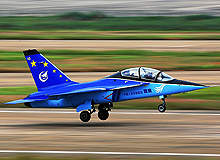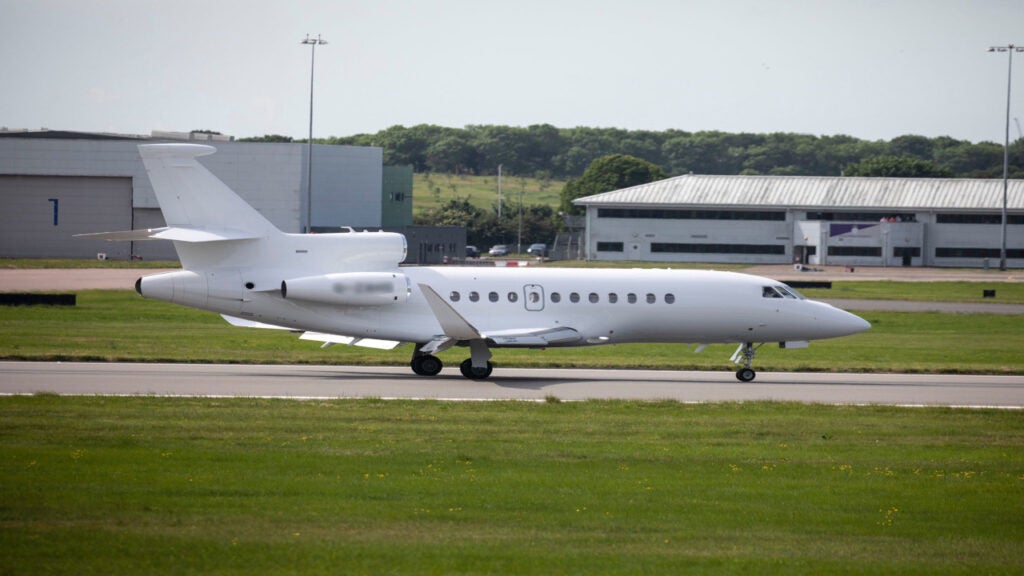
Hongdu L-15 is a twin engine, modern jet trainer or light attack aircraft designed and manufactured by Hongdu Aviation Industry Group (HAIG) of China. It has been built as a rival to Guizhou JL-9/FTC-2000 Mountain Eagle. The L-15 will be used as a lead-in fighter trainer (LIFT) by the People’s Liberation Army Air Force (PLAAF) and the People’s Liberation Army Naval Air Force (PLANAF). About five prototypes have been built by HAIG.
Hongdu L-15 trainer aircraft orders
PLAAF ordered four Hongdu L-15 trainer aircraft in April 2006. Pakistan Air Force (PAF) is planning to procure Hongdu L-15 supersonic jet trainers from HAIG to replace its existing K-8 Karakorum jet trainer. The procurement will allow PAF to reduce its trainer aircraft from four to two.
Hongdu L-15 design
HAIG unveiled the L-15 aircraft design in September 2001 during the 9th Aviation exhibition in Beijing. The large leading edge extensions (LEX) design allows the aircraft to offer a maximum angle of attack of 30°. The aircraft can also be changed into light air-to-ground attack aircraft with minor modifications.
The aircraft has been designed to train pilots of the third-generation fighters encompassing Su-27, Su-30, J-10, and J-11. The enhanced design provides safety to the pilot while cutting down the training cost compared to its rivals.
HAIG L-15 development
The development of Hongdu L-15 began when Hongdu planned a modern trainer aircraft which would meet the requirements of PLAAF’s new generation fighters. Russian based Yakovlev Design Bureau aided in the L-15 manufacturing as its design resembles that of the Yak-130 aircraft.
The initial prototype was rolled out in September 2005 and took its maiden flight in March 2006. The second prototype completed its first flight in May 2008. The first and second prototypes are powered by two ZMKB-Progress (Lotarev) DV-2 engines. An improved version, the DV-2F, which boasts of afterburner capabilities, was fitted in the third model. Ukraine’s Ivchenko-Progress AI-222K-25F turbofan engines with afterburner are incorporated in the later L-15 versions.
The Hongdu L-15 was displayed at the Dubai Air show organised in November 2009 to promote its aircraft in the potential Middle East market. HAIG will receive export orders from Africa, the Middle East and South America.
The first operational variant powered by Ivchenko-Progress AI-222K-25F turbofan engines was introduced in August 2010 upon completion of six months production.
Hongdu L-15 cockpit
The Hongdu L-15 features a full glass cockpit which can accommodate two crew members, either a student pilot and instructor, or an official pilot and weapons systems officer. A multi-colour head down display is fitted on both front and rear cockpit, while the head up display is installed at the cockpit front. Digital fly by wire (FBW), and hands-on throttle and stick (HOTAS) flight control systems are also installed in the aircraft.
Armaments
The Hongdu L-15 comprises six hard points of which four are located under the two wings and two under the wing-tips. It can accommodate 3,000kg of payload. The aircraft can carry short range air-to-air missiles, air-to-ground missiles, bombs and rocket pods.
Ivchenko Progress AI-222K-25F Engines
The aircraft is powered by two Ivchenko Progress AI-222K-25F afterburning turbofan engines. Each engine can generate 4,200kg of thrust afterburner.
The aircraft is also integrated with full authority digital engine control (FADEC), which decreases the work load of the pilot by executing autopilot operations.
The length and width of the engine are 2.2m and 0.86m respectively.
The height is 1.09m. The service life of the engine is 3000 flight hours, while the dry weight is 440kg.
Performance
The Hongdu L-15 can climb at the rate of 150m/s. Its maximum speed is 1,715km/h. The range and combat radius of the aircraft are 3,100km and 550km respectively. The service ceiling of the aircraft is 16,000m. Its maximum loitering time is two hours. The aircraft weighs around 4,960kg and its maximum take-off weight is 9,500kg.




